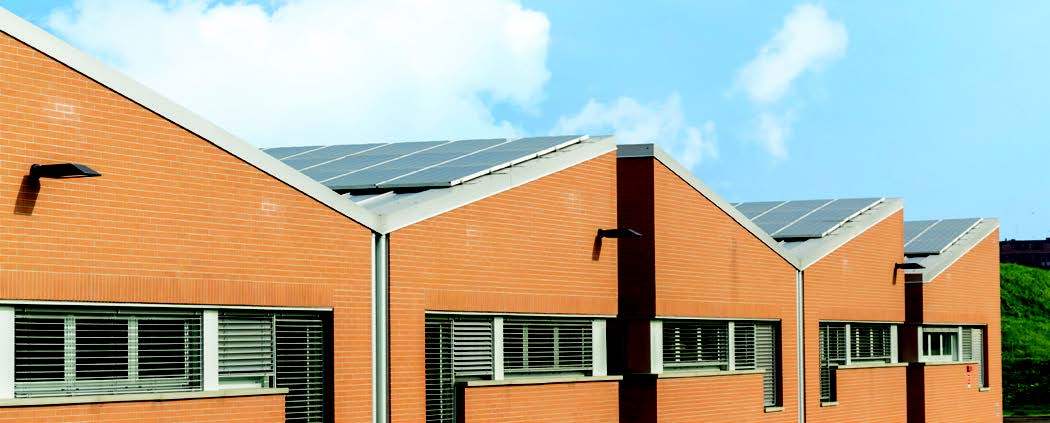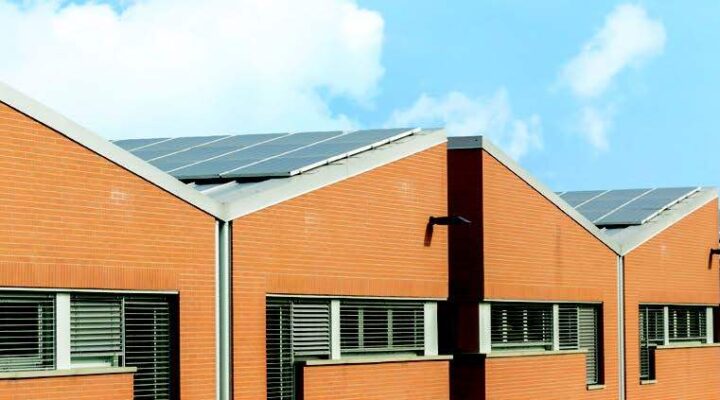Brokers are uniquely positioned to drive efficiency improvements—and poised to capitalize on the benefits. Both building owners and managers, as well as potential tenants, increasingly recognize the link between the green features of a building and increased rental and sales prices. Brokers that are adept at understanding the value proposition of efficiency—and how it differs for each stakeholder in a sale transaction—will be best positioned to capitalize on opportunities at the sale of green buildings.
This toolkit provides brokers with the actionable resources they need to ensure that they capture the full value of efficiency when a building is sold or leased. It also provides owners and managers with insights into brokers’ priorities in facilitating the sale of a commercial property. This transparency between parties is critical to ensure that brokers, owners, and tenants are aligned in promoting the value of efficiency and driving ongoing efficiency improvements at a property.
What’s Driving a Shift in the Market?
Companies are increasingly looking for ways to quantify their sustainability progress in terms of the energy and non-energy benefits energy efficient features bring to their properties. The energy benefits—lower utility bills—are often apparent in year-to-year cost savings but the non-energy benefits—reductions in carbon emissions, competitive advantage in the market, and avoided future maintenance costs—may manifest in boosting a company’s bottom line indirectly.
In 2013, the Governance Accountability Institute reported that 72 percent of Standard and Poor’s (S&P) 500 Companies are reporting on sustainability metrics. Brokers are key intermediaries in guiding ownership through the process of marketing their building’s energy efficiency to tenants and securing the tenant’s buy-in to support efficiency initiatives. Major trends include:
- Investing in Sustainability Ratings: Investors are requesting sustainability information to understand their company’s carbon footprint and their competitor’s carbon footprint. Because of this demand, rating programs such as the Global Real Estate Sustainability Benchmark (GRESB) and S&P’s Carbon Efficient Index, which rate the environmental, social and governance (ESG) performance of real assets, and the carbon footprint of assets, respectively, are quickly coming to the business forefront.
- Increasing Technological Capabilities: Energy data is quickly becoming more accessible through the Internet of Things (IoT) and sub-metering capabilities, which can lead to better run buildings. Read more about IoT here.
- Boosting Asset Values at High-Performance Buildings: Investors and asset managers are realizing that energy conservation measures can yield higher net operating incomes (NOI), which lead to higher asset values. Read about how The Institute for Market Transformation (IMT) conducted a series of studies that show how energy efficiency improvements can lead to higher asset values.
- Complying with Local Benchmarking Ordinances: Other market demands are coming from local and state governments such as Seattle, Portland, and Washington State. These benchmarking ordinances typically require owners to report their energy use to the local government on an annual basis. Read how benchmarking helps the commercial real industry save energy and money.

What’s the Value in Green Building?
Brokers play an integral role in ensuring that the both existing efficiency attributes and the potential for future efficiency improvements at a property are incorporated into the sale price and the rental rates.
Commercial energy efficiency is directly tied to lower utility bills and, consequently, lower overall operating and maintenance expenses. The resulting increase in net operating income (NOI) can boost a property’s asset value. However, the benefits of energy efficiency for both tenants and owners extend far beyond simply the utility cost savings associated with reducing energy consumption.
Today’s best tenants are seeking out green spaces, not only to demonstrate a commitment to sustainability but also to create healthier work environments and increase employee productivity. Tenants are increasingly willing to pay a premium for efficient buildings that offer benefits such as HVAC optimization, plug and process load management, daylighting, occupancy controls, and high performance lighting. Recent studies by Bentall Kennedy and the Department of Energy show that green buildings consistently show better retention of quality tenants and higher occupancy levels, lease-up rates, and sale prices than less-efficient properties.
Owners that are on the market to acquire, and subsequently lease, properties today expect brokers to feel comfortable communicating the green attributes of a building to potential tenants to justify higher rental rates or to buyers to justify higher sale prices. Similarly, brokers should be able to navigate green building performance standards and certifications, such as LEED and WELL Building Standard. Owners that are selling a property will expect brokers to assess and communicate the value of efficiency investments they have made in order to realize their expected increases in asset value and broker a better deal.

Greening Your Approach
Brokers have access to the key decision makers at a property at the time of acquisition or tenant change— when a building has the greatest opportunity for efficiency improvements. Brokers and ownerss can leverage green leases (also known as aligned leases, high performance leases, or energy efficient leases) to align the financial and energy incentives of building owners and tenants. By helping tenants and owners to agree on green lease clauses, a broker enables these parties to work together to save money, conserve resources, and ensure the efficient operation of buildings.
- Learn about the basics of green leasing from this toolkit.
- Visit the Green Lease Library to get lease clauses, case studies, and other resources to help your clients green their lease.
- Peruse the U.S. Department of Energy’s BetterBuildings Alliance site to find case studies, videos, and presentations for brokers on energy efficient leasing best practices
Furthermore, these tips and strategies will help brokers to start the conversation with owners, property managers, and tenants about unlocking their building’s efficiency potential.
Advice for Owner Representatives
- Stress to your client how energy efficient buildings lower operating expenses, yield higher NOI and asset values. Refer to the articles presented above to make your case.
– Encourage owners to read about how to tailor the business case for efficiency to fit their capital budget - Show your client how energy Efficient buildings lead to happier, healthier clients.
– Read about how an office landlord in Boise, ID improved tenant satisfaction through energy efficiency improvements. - Research prospective tenant ideas about sustainability; look at their corporate social responsibility (CSR) goals on their website. Report the findings to your client.
Advice for Tenant Representatives
- Examine your client’s site selection criteria or request for proposals (RFP): Use this green site selection questionnaire as a conversation starter, find out what sustainability features are most important to them.
- Energy Efficient Spaces are More Productive: Help your client quantify productivity savings derived from energy efficient spaces.
- Direct your clients to this blog post on how to find energy-efficiency commercial space.
- Ask your client if they are looking to lease in LEED and/or EnergyStar certified buildings:
– You can find where these buildings are located by using:- GBIG, USBGC-run green building database.
- ENERGY STAR database: Confirm buildings are ENERGY STAR certified.
- CoStar: Due to recent partnership with the U.S. DOE, CoStar will now display energy efficiency information in their database for approximately 60,000 buildings.
